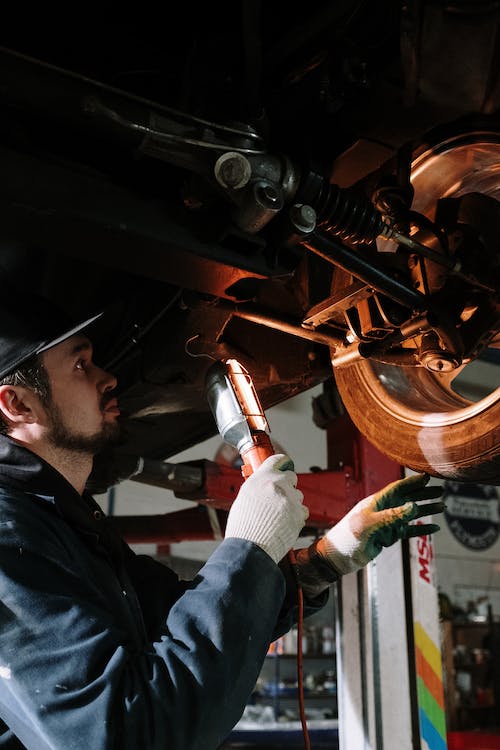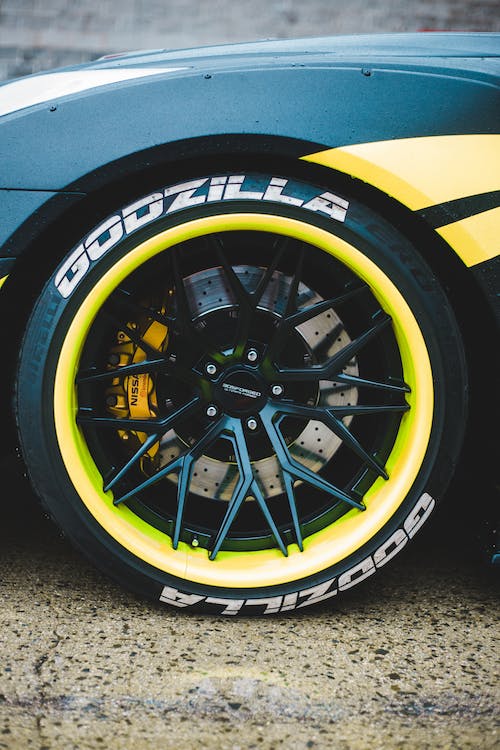Contents
– The ventilated brake disc: a little theory
– What do ventilated brake discs look like?
– Which models for which vehicles?
– A little tour of the workshop…
So much progress has been made in car braking since 1962 with the Renault R8 and its 4 solid disc brakes (a revolution at the time), which we must admit were not very efficient! Since then, braking technology has evolved, especially with the appearance of ventilated disc brakes.
The ventilated brake disc: a little theory
Maybe you had noticed, after a steep descent in the mountains, that your wheels were hot when you arrived (don’t put your hands on them, the temperature of the brakes is around 400°C)? Don’t panic! This is a completely normal and even necessary phenomenon.
Brakes are used to slow down and stop the vehicle and, therefore, to go from a given speed to a lower or zero speed. While driving, your vehicle stores kinetic energy* that must be released when braking.
Braking, i.e., the pressure of the brake pads on the discs, allows its transformation into heat energy.
The difficulty lies in transmitting this heat energy into the ambient air, at the risk of exceeding the thermal capacities of the braking components (pads, discs, brake fluid, etc.). Ventilated brake discs, therefore, actively participate in this heat exchange with the air.
What do ventilated brake discs look like?
As their name suggests, they are disc-shaped, attached to the hub and the caliper, and the brake pads pinch a large part of their diameter.
Compared to the “solid” brake disc, their particularity is to be divided into 2 faces in the longitudinal plane and separated by windows, where air can infiltrate. This arrangement increases the metal surface in contact with the air and thus the heat exchange.
Which models for which vehicles?
Location of ventilated brake discs
Vented disc brakes are mainly mounted at the front of the vehicle. The rear, less solicited, receives solid discs.
The different types of ventilated brake discs
Dimensions. They vary according to the type of vehicle: the more powerful and heavy it is, the larger the diameter of the discs.
The constitution. It differs according to the use. Mass-produced vehicles are equipped with low-purchased cost ventilated discs made of cast steel. Prestige and competition cars are fitted with carbon or ceramic discs. The great advantage of these materials is that they absorb heat efficiently and retain their mechanical properties at very high temperatures (500 to 800°C). On these discs, perforations are present on the entire braking surface to increase the heat exchange further.
A little tour of the workshop…

Maintenance of ventilated brake discs
The replacement of these discs is justified on average when the 2nd set of brake pads is replaced, i.e., every 40 to 70,000 km (the periodicity strongly depends on the type of driving), the minimum thickness required is then reached.
It may also be necessary if the following symptoms are observed:
– warping: this is indicated by a braking vibration felt in the direction and is due to deformation in the longitudinal axis by heat;
– cracks and fissures: due to excessive heating of the metal, which loses its mechanical properties; in extreme cases, large cracks can lead to the rupture of the disc;
– disc marking: caused by worn pads whose metal part has come into contact with the disc surface (indicated by a metallic rubbing noise during braking). It leads to the compulsory replacement of discs and pads (discs are changed in pairs).
The cost of the repair
For the labor, the cost is limited, the replacement being speedy (0.5 to 0.75 h), that is to say, $30 to $50. For the material, the price of a pair of ventilated discs fluctuates according to the models.
|
Type of ventilated disks |
Internet |
Independent distributors |
Manufacturer network (original parts) |
|---|---|---|---|
|
Medium segment vehicle |
$50 to $100 |
$80 to $150 |
$200 |
|
High-end vehicle |
$80 to $120 |
$150 to $250 |
$300 |
|
Exceptional or competition vehicle |
From $500 to $8 000 (manufacturer and competition workshops)* |
||

